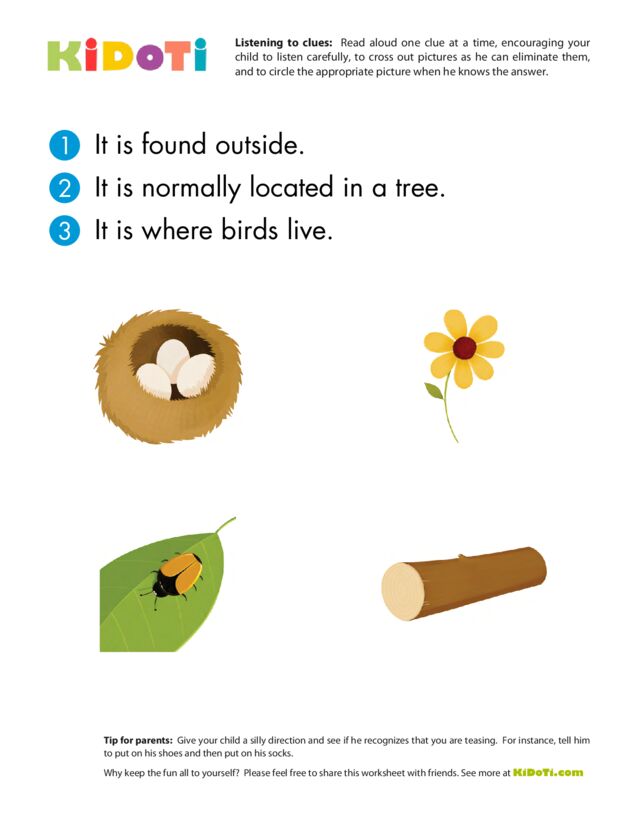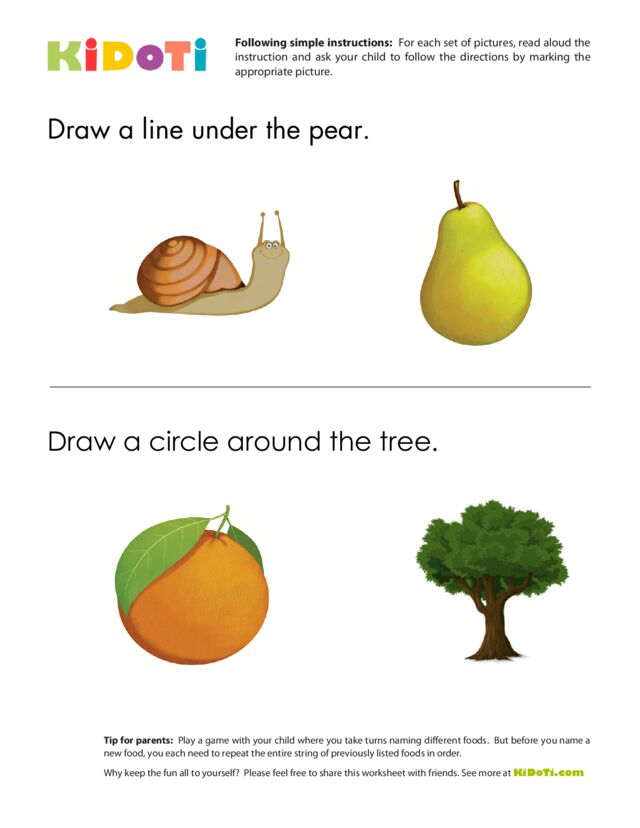To productively participate in the classroom, all children must be able to understand and interpret spoken words. These auditory processing skills develop with time and practice. Help your kids to practice recognizing, interpreting, and analyzing spoken language through listening to clues and following multi-step directions.
Listening skills
Following Directions
The importance of having strong auditory processing skills
Auditory processing is more that just hearing the words that are spoken – it is understanding and processing what is said. For example, how many times have you told your child “You’re not listening!” when you know that he was well within earshot and could hear your voice?
The ability to understand language is critical to success in all aspects of school. From the lessons being taught to social interactions with peers, children will need to correctly process what is being said. Even getting along in the classroom by understanding the teacher’s directions for daily routines depends on strong auditory processing skills.
Tips for using these auditory processing worksheets
The auditory processing worksheets on this page will help your child understand the importance of actually listening to and understanding what he hears as opposed to simply hearing what is being spoken. These sheets also give him practice following directions, which can be helpful in school and at home.
With all the auditory processing worksheets on this page, it is important to let your child know that you will only be reading the directions one time and he will have to listen carefully. Naturally, it would be helpful to present these worksheets in a quiet place with no other distractions. This will reinforce for your child that listening deliberately and understanding what is being said are very important.
One-step directions are the easiest to follow, so begin with these auditory processing worksheets. You might want to ask your child to point to each picture as you name it so that there is no confusion as you proceed with these worksheets.
With the next level of difficulty, the auditory processing worksheets present multi-step directions or clues to be followed. Again, remind your child that you will be reading the words just one time and ask him to listen carefully before he responds to your directions or clues.Part of good listening is being patient and waiting to hear all the words that are spoken instead of hearing some words and making assumptions about what will be said.
Additional ways to encourage your child’s auditory processing skill development
Using the activities on these auditory processing worksheets as your guide, you can create fun activities for your child that will help him further hone his auditory processing skills.
- Give your child clues about what clothes to put on in the morning using specific instructions such as “the red shirt with narrow blue stripes” or “the brown pants with two pockets in the back and a drawstring at the waist” and then ask him to get dressed. Since he likely has numerous red shirts or brown pants in this closet, he will need to listen carefully to your complete instruction.
- Play a guessing game by giving him clues to an item that you have thought of and see how many clues he needs to guess the item correctly. You could do this while playing “I Spy” or simply by hiding items around your house and having him hunt for them.
- Try playing the “Silly or Not Silly” game by saying a sentence and asking your child to label it “silly” or “not silly.” For example, you could say, “The mop cooked spaghetti and meatballs for the canary.” (Silly – of course!) Your child will need to listen carefully to each word in the sentence to determine whethe the sentence is silly or not, since a man cooking spaghetti and meatballs for the children, for example, would not be silly. Both this and the proceeding game can be played anywhere, anytime that you have some spare minutes with your child, and are a fun way to practice auditory processing skills.

